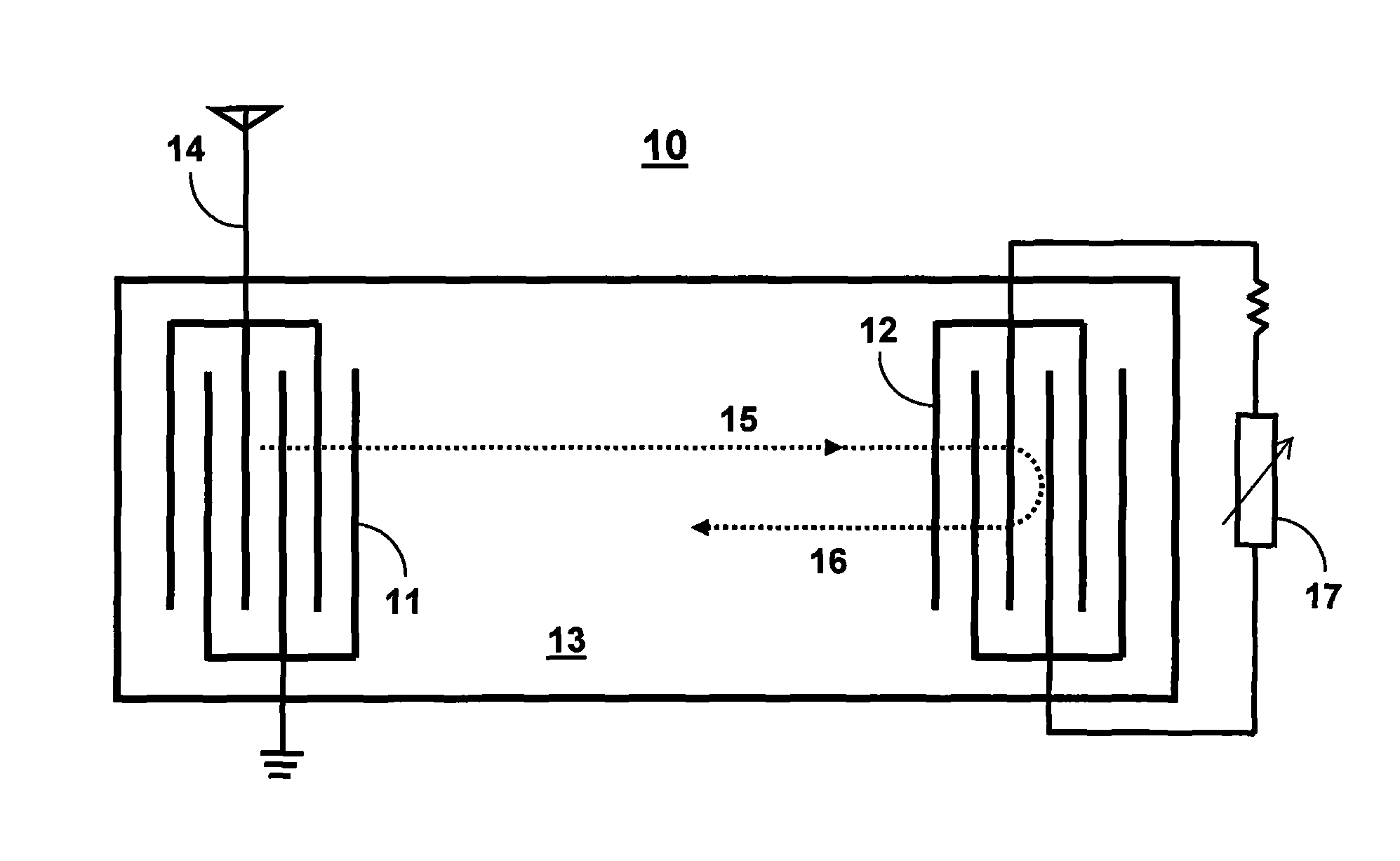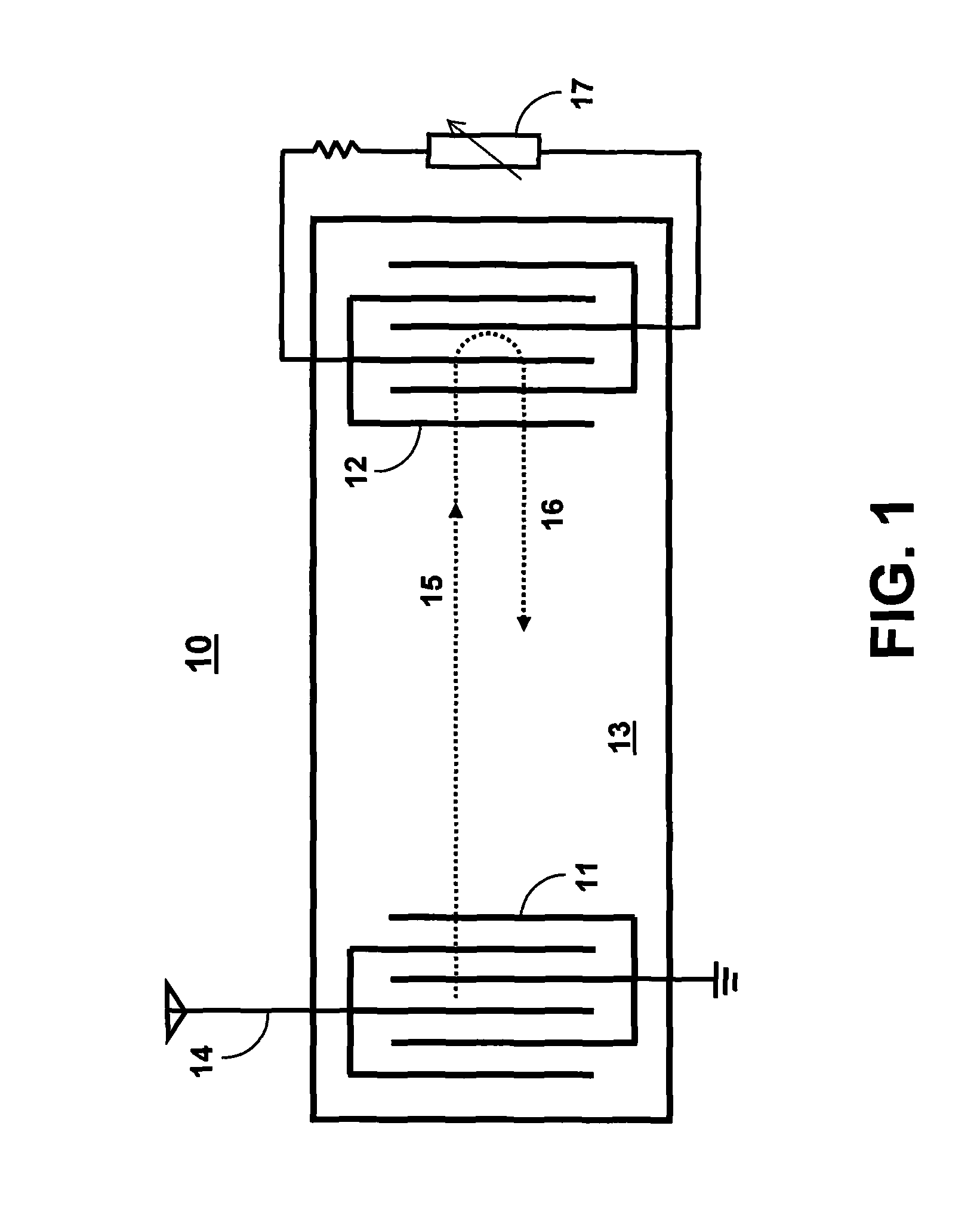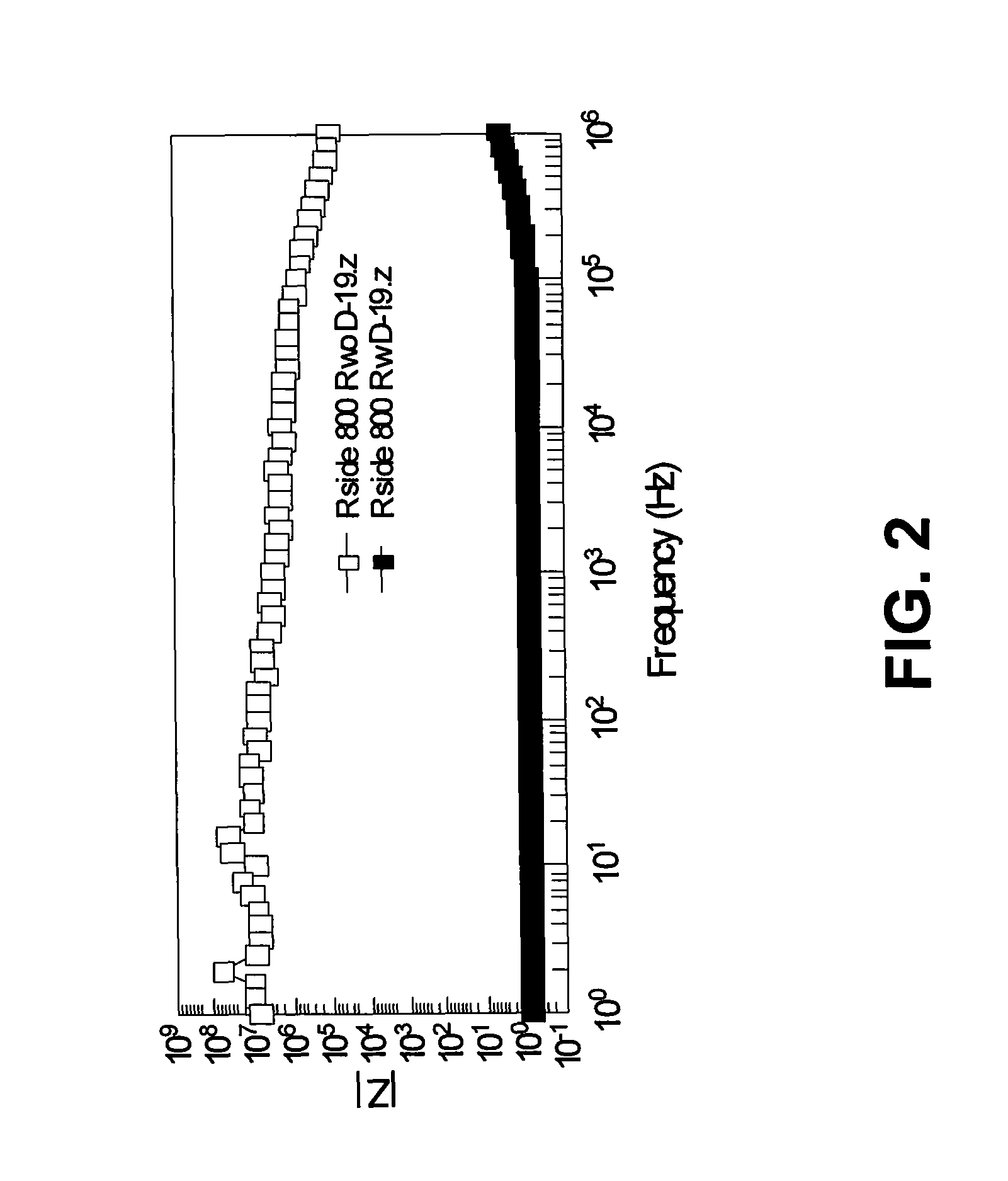Wireless passive radiation sensor
a passive radiation sensor and wireless technology, applied in the field of radiation detection, can solve the problems of reducing the energy available for sensing measurement, increasing the fabrication cost during dicing and packaging, and being limited by the expense and portability of the readout hardwar
- Summary
- Abstract
- Description
- Claims
- Application Information
AI Technical Summary
Benefits of technology
Problems solved by technology
Method used
Image
Examples
Embodiment Construction
[0017]The wireless passive radiation sensor of the present invention is based on the change in minimum insertion loss of a SAW delay line due to a radiation-induced change in the impedance of a radiation-sensitive film. FIG. 1 is a schematic illustration of a wireless passive radiation sensor 10 of the present invention. The sensor 10 uses a SAW delay line, comprising two opposing comb-like interdigital transducers (IDTs): a launch IDT 11 and a sensor IDT 12. Each IDT comprises a fingerlike periodic pattern of parallel in-plane electrodes that can be photo-lithographically patterned on the surface of a piezoelectric substrate 13. The substrate 13 preferably comprises a piezoelectric material with a high mechanical coupling coefficient, such as LiNbO3, LiTaO3, GaAs, quartz, or other suitable piezoelectric substrate. Delay is determined by the center-to-center spacing between the opposing transducers 11 and 12. The resonant frequency is determined by the speed of sound in the piezoele...
PUM
 Login to View More
Login to View More Abstract
Description
Claims
Application Information
 Login to View More
Login to View More - R&D
- Intellectual Property
- Life Sciences
- Materials
- Tech Scout
- Unparalleled Data Quality
- Higher Quality Content
- 60% Fewer Hallucinations
Browse by: Latest US Patents, China's latest patents, Technical Efficacy Thesaurus, Application Domain, Technology Topic, Popular Technical Reports.
© 2025 PatSnap. All rights reserved.Legal|Privacy policy|Modern Slavery Act Transparency Statement|Sitemap|About US| Contact US: help@patsnap.com



